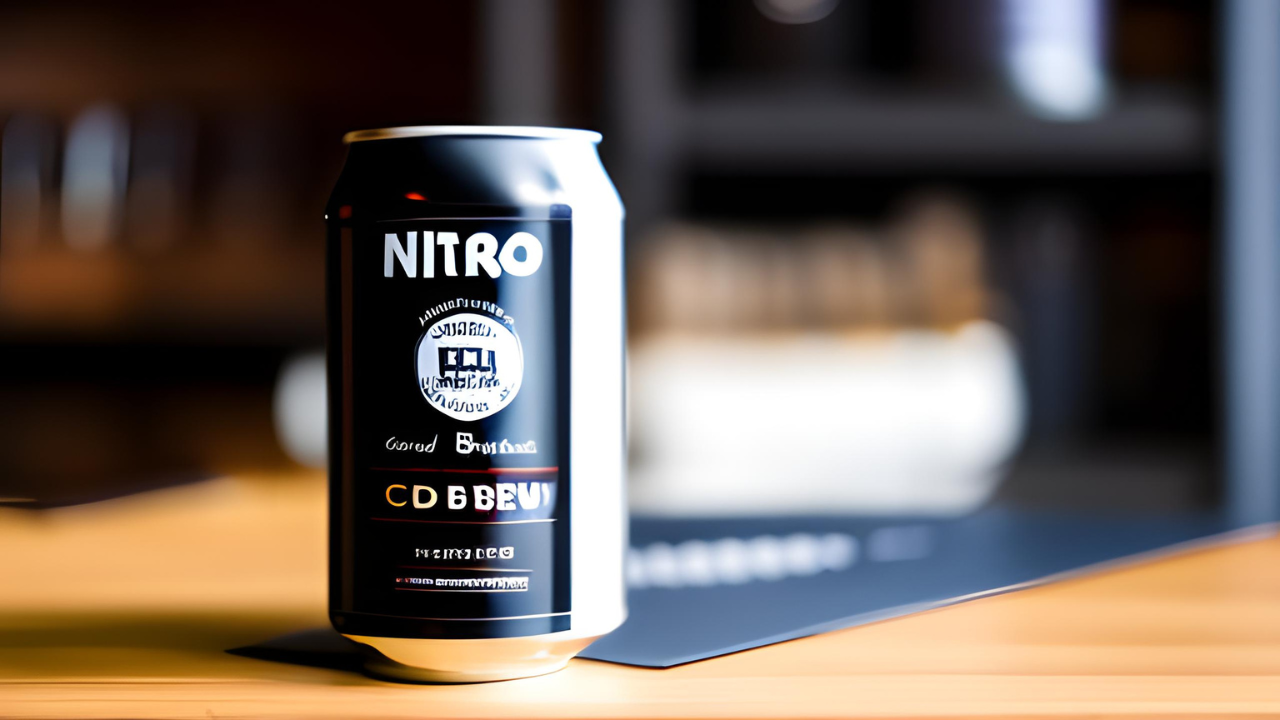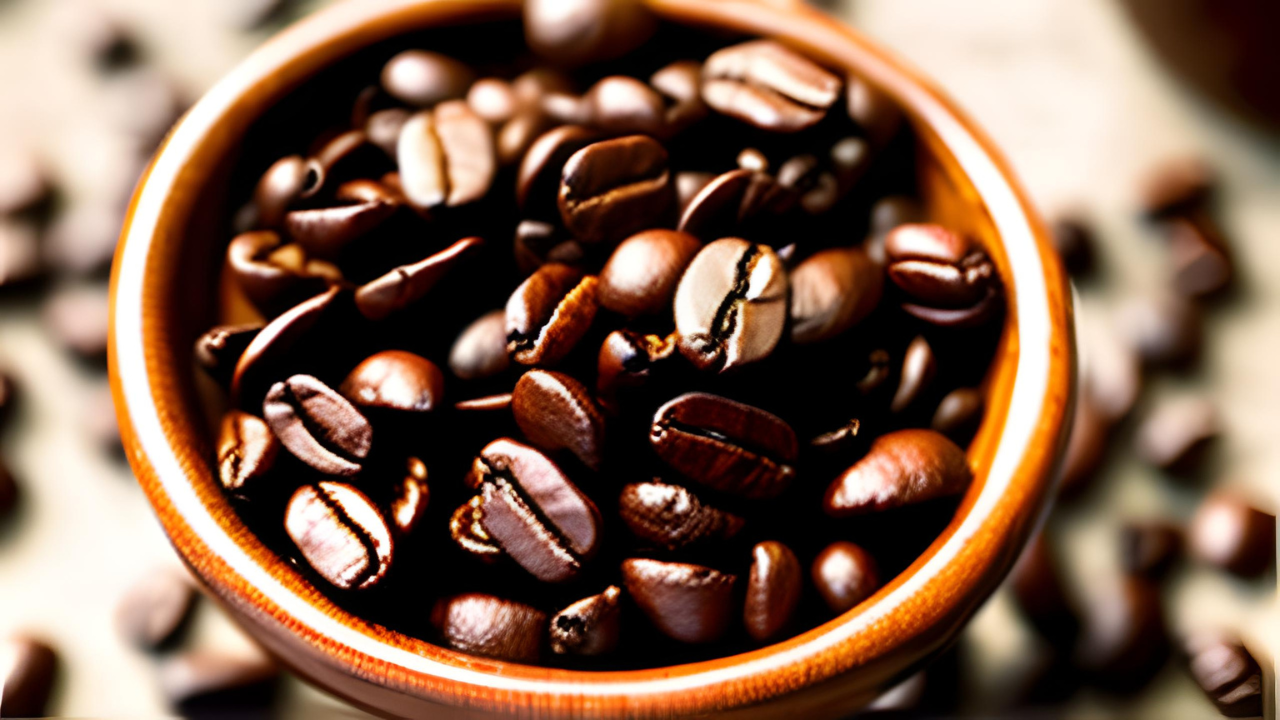Nitro cold brew has gained popularity among coffee enthusiasts, thanks to its rich flavor and velvety, creamy texture. As one of the latest additions to the Starbucks menu, you might be wondering exactly how much caffeine is present in a can of their Nitro Cold Brew.
In this article, we’ll explore the caffeine content in Starbucks’ canned Nitro Cold Brew, as well as some factors that contribute to its higher caffeine concentration compared to a regular cup of coffee. By understanding the caffeine amount in Nitro Cold Brew, you can make informed decisions when looking for that extra boost of energy.
So, let’s dive into the world of Nitro Cold Brew and uncover the caffeine mysteries behind this trendy beverage!
What Is Nitro Cold Brew?

Nitro Cold Brew Coffee is a unique type of cold brew coffee infused with nitrogen gas for an amazingly creamy and smooth texture. The infusion process involves charging the cold brew with nitrogen under high pressure before serving through a specially designed tap system. The end result is an indulgent cup of frothy cold coffee that looks and tastes just like a pint of stout beer!
One of the primary distinctions between regular cold brew and nitro cold brew is their texture and mouthfeel. Regular cold brew is known for its smoothness, while nitrogen adds an extra layer of velvety-smooth mouthfeel that sets nitro cold brew apart in coffee culture. With tiny nitrogen bubbles creating a silky, almost velvety mouthfeel, nitro cold brew stands apart from other cold brews.
Nitro cold brew stands out due to its unique appearance. When served, it cascades into the glass with nitrogen bubbles rising to the top. This creates a beautiful visual effect, as well as a layer of creamy foam that sits on top of the cold coffee. For a detailed comparison between regular cold brews and nitro cold brew, you can visit Cold Brew Vs Nitro Cold Brew.
Since the nitrogen-infused brewing method has grown in popularity, many coffeehouses and cafes, such local coffee shops and Starbucks, have added nitro cold brew beverages to their menu. Furthermore, nitro cold brew has expanded beyond the traditional black coffee and can now be found in various flavors and styles, such as dark caramel or with added sweet cream.
As far as caffeine content goes, nitro cold brew can pack quite a punch. For example, Starbucks offers a canned nitro cold brew that contains 235 milligrams of caffeine per 11 fl oz can. For those interested in making their own nitro cold brew at home, there’s a helpful guide on how to make nitro cold brew that can come in handy.
Caffeine Content in Nitro Cold Brew Cans
Nitro cold brew coffee is a popular and refreshing coffee beverage that starts as regular cold brew coffee before being infused with nitrogen. This addition gives the caffeinated beverage an impressive smooth mouthfeel, as well as amplifying its natural flavors. But how about caffeine content, especially in canned versions of nitro cold brew? How does it compare?
According to Caffeine Park, Starbucks Canned Nitro Cold Brew contains 235 mg of caffeine per 11 fl oz can. In comparison, an 8 ounce cup of regular coffee on average contains 95 milligrams. Therefore, nitro cold brew has much higher caffeine concentration. Please be aware that exact caffeine content may vary depending on the brand and coffee beans used in production of the nitro cold brew beverage.
When comparing nitro cold brew to traditional cold brew, both types of coffee have higher concentrations of caffeine due to the stronger coffee beans and extended brewing process. However, it is interesting to know that the nitrogen itself doesn’t add any caffeine to the drink, as explained by Sip Coffeehouse.
One factor to consider when gauging the caffeine content in canned nitro cold brew is the size of the can. Different brands offer various sizes, which will affect the total amount of caffeine in the drink. Hence, it is essential to check the labeling for accurate caffeine content and adjust consumption based on personal preferences and tolerance.
For those interested in making nitro cold brew at home, there are numerous resources on nitro cold brew caffeine available such as this guide on how to make nitro cold brew. This allows you to have control over the coffee beans used and the amount of caffeine in your drink.
To summarize, nitro cold brew in cans generally has a higher caffeine content compared to regular coffee, but the exact amount of caffeine can vary based on the brand, coffee beans, and size of the can. For those looking to customize their own nitro coffee cold brew experience, consider making it at home and adjusting the coffee beans and brewing process to better suit your caffeine preferences.
Factors Affecting Caffeine Levels in Nitro Cold Brew Cans
When it comes to caffeine levels in nitro cold brew cans, several factors can influence the overall content in each serving. Understanding these factors helps provide a clearer picture of how much or less caffeine that you can expect in your nitro cold brew.
Coffee Beans and Roast

The type of coffee beans used and their roast can significantly impact the caffeine levels of nitro cold brew. Arabica beans, which are commonly used in specialty coffee shops, tend to have lower caffeine content compared to Robusta beans. Additionally, the roast level can play a role. Generally, lighter roasts have slightly higher caffeine levels than darker roasts.
Brewing Process
The brewing process is another crucial factor in determining the caffeine content of nitro cold brew. Cold brewing involves steeping coffee grounds in cold water for an extended period. This method extracts more caffeine than traditional hot brewing methods, which could lead to a higher caffeine content in the final product. Nitro cold brew, in particular, uses a higher ratio of coffee grounds to water than regular cold brew, which can result in an even higher caffeine concentration.(source)
Serving Size
The serving size is an essential factor to consider when gauging the caffeine levels in a nitro cold brew can. Generally, larger servings will contain more caffeine. It’s important to note that Starbucks Nitro Cold Brew cans come in different sizes, with varying caffeine levels:
- Black Tall: 215 mg caffeine
- Black Grande: 280 mg caffeine
- With Sweet Cream Tall: 200 mg caffeine
- With Sweet Cream Grande: 265 mg caffeine
These figures are based on the fact that nitro cold brew is served without ice, which means it contains more caffeine per cup size than traditional iced cold brew(source).
In conclusion, the caffeine content in nitro cold brew cans can vary depending on the coffee beans and their roast, the brewing process, and the serving size. To understand the potential caffeine intake when enjoying a can of nitro cold brew, it’s essential to consider these factors and make informed decisions based on your own caffeine tolerance and preferences. Learn more about the differences between cold brew and nitro cold brew or check out this guide on how to make nitro cold brew at home.
Comparing Caffeine Content
Traditional Cold Brew
Traditional cold brew coffee tends to have a slightly higher caffeine content compared to hot coffee, depending on the type of coffee beans and brewing time. The longer the brewing process, the higher the caffeine content might be. However, caffeine content can vary depending on the type of beans, roasting process, and brewing method. In general, a 16-ounce cup of regular cold brew contains around 188 mg of caffeine, which is approximately 11.8 mg of caffeine per ounce (source).
Hot Coffee
Hot coffee has a relatively similar caffeine content to traditional cold brew. A 16-ounce cup of regular hot coffee contains, on average, 188 mg of caffeine, or about 11.8 mg of caffeine per ounce (source). It’s important to note that the brewing method and type of coffee beans used can influence the caffeine content in hot coffee as well.
Energy Drinks
Energy drinks tend to provide a different caffeine experience compared to nitro cold brew and regular coffee. A typical energy drink contains a significantly lower caffeine content per ounce, but they often include additional ingredients such as taurine, guarana, and ginseng, which can contribute to the stimulating effect. For comparison, a Starbucks Canned Nitro Cold Brew contains about 235 mg of caffeine per can (source), while energy drinks typically range from 50 to 200 mg of caffeine per can, depending on the brand and size.
Nitro Cold Brew Can
A Starbucks Canned Nitro Cold Brew contains approximately 235 mg of caffeine per can (source). This amount of caffeine is higher than most sodas, teas, and other energy drinks. Considering a nitro cold brew can as a convenient option for enjoying a caffeinated beverage, you can also learn how to make nitro cold brew at home (source).
It is essential to understand the varying caffeine content among different beverages; knowing the differences will help you choose the right drink for your preferences and caffeine tolerance, and ensure you stay within the FDA’s recommended daily caffeine limit of 400 mg.
Caffeine Intake Considerations
When consuming nitro cold brew from a can, it’s important to consider the caffeine content to ensure you’re staying within safe consumption limits. In this section, we’ll discuss safe consumption limits, benefits, and risks of caffeine in nitro cold brew.
Safe Consumption Limits
A standard 11 fl oz can of Starbucks Nitro Cold Brew contains 235 mg of caffeine. According to the FDA, a healthy adult can typically consume up to 400 mg of caffeine daily without experiencing negative side effects. However, it’s essential to take into account any other caffeinated beverages or products you consume throughout the day, as the caffeine content can add up quickly.
Benefits
There are several benefits associated with moderate caffeine intake, which can include:
- Increased alertness and focus
- Improved physical performance
- Possible enhancement of cognitive function and mood
- Reduced risk of certain diseases, such as Parkinson’s, dementia, and Type 2 Diabetes
It’s important to note that these benefits are often associated with moderate caffeine consumption, so it’s crucial to stay within the recommended daily limits.
Risks
Excessive caffeine intake can lead to several risks and adverse effects, including:
- Increased heart rate and irregular heartbeat
- Anxiety and restlessness
- Digestive issues
- Sleep disturbances
- Dependency and withdrawal symptoms
To minimize these risks, monitor your caffeine intake and be mindful of how your body reacts to it. If you experience negative side effects or have concerns about your caffeine consumption, consult with a healthcare professional.
In conclusion, understanding the caffeine content in a nitro cold brew can and incorporating it into your daily intake is essential for reaping its benefits and minimizing the risks. Remember to always drink responsibly and stay within the safe consumption limits.
Conclusion
In summary, nitro cold brew cans pack a significant amount of caffeine compared to regular brewed coffee. A Starbucks canned nitro cold brew, for example, contains 235 mg of caffeine per 11 fl oz can. This high caffeine content is one of the reasons for the increased popularity of nitro cold brews among coffee enthusiasts.
The velvety texture and rich flavor of nitro cold brew make it a delightful choice for those who appreciate a strong and smooth coffee taste. To further explore the world of cold brew coffee, you can experiment with making your own nitro cold brew at home by following this guide or comparing the differences between cold brew and nitro cold brew here.
As you enjoy your nitro cold brew, be mindful of the caffeine content, especially if you are sensitive to caffeine or have personal health concerns. Knowing how much caffeine is in your nitro cold brew can helps you make informed decisions about your coffee consumption and ensures you savor every sip responsibly.